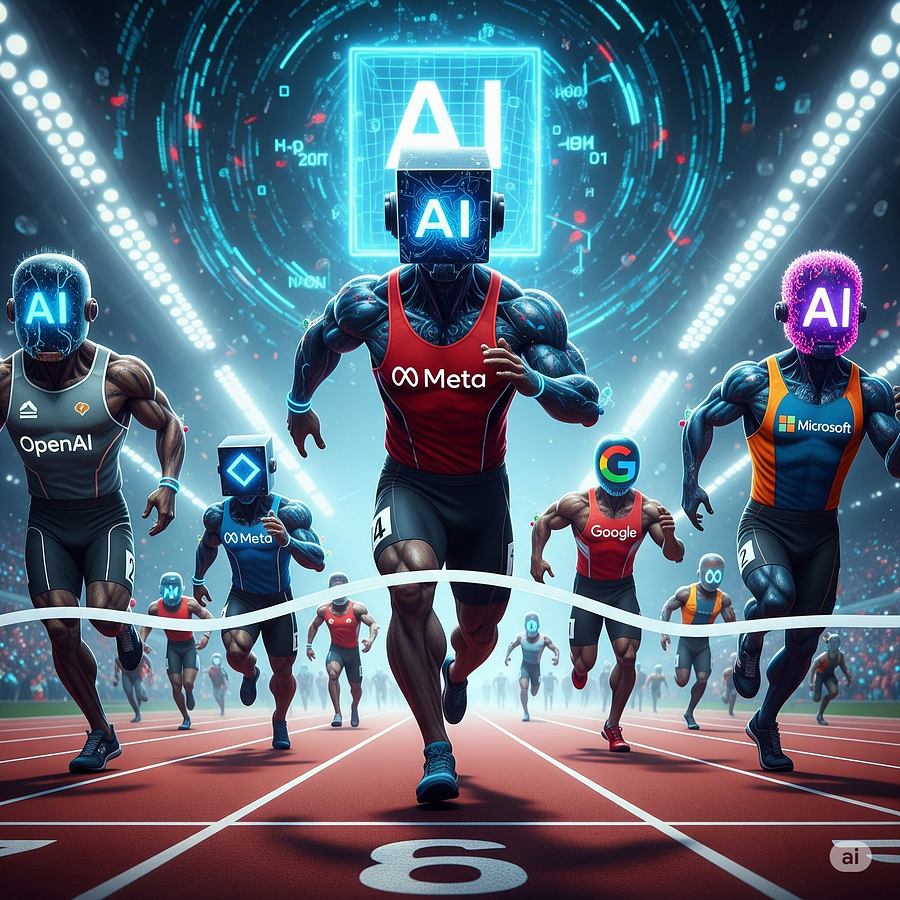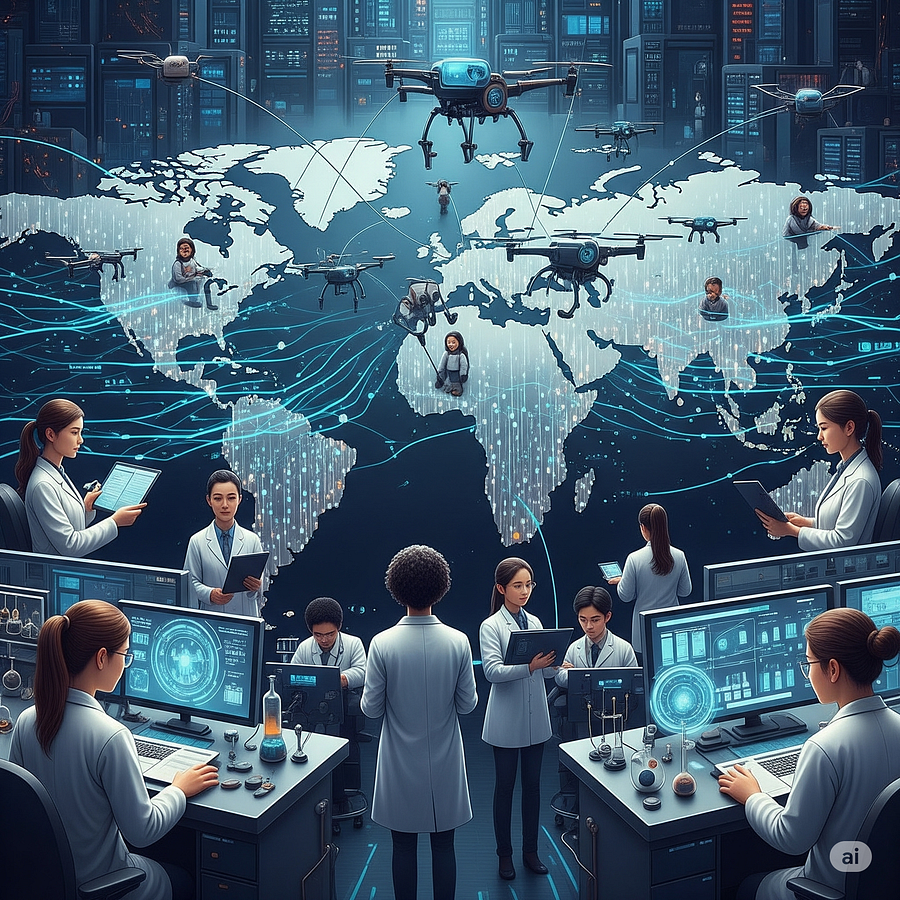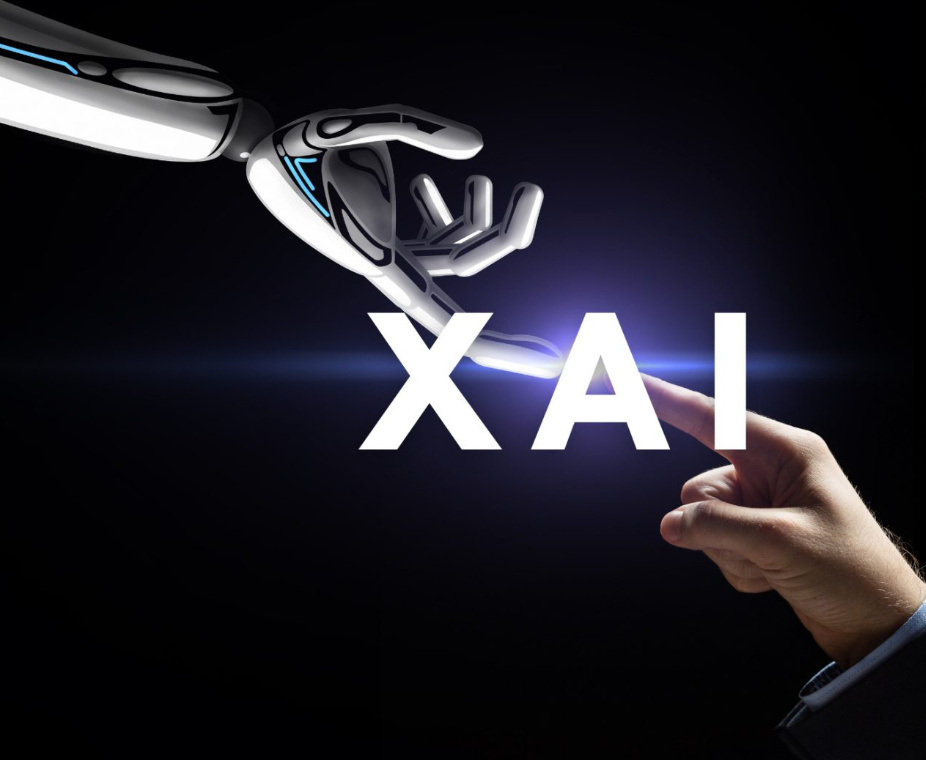The $100 Billion AGI Arms Race: Who’s Winning and What’s at Stake
The future of humanity hangs in the balance as tech titans pour unprecedented resources into the race for Artificial General Intelligence. But in this high-stakes game where billions of dollars meet existential risks, who will emerge victorious — and at what cost?

In the shadowy corridors of Silicon Valley, Beijing’s tech districts, and London’s AI research labs, a battle is raging that will determine the trajectory of human civilization. It’s not fought with tanks or missiles, but with algorithms, data centers, and astronomical sums of money. Welcome to the $100 billion race for Artificial General Intelligence (AGI) — a competition so intense it makes the space race look like a friendly neighborhood game.
As we stand at the precipice of 2025, the question isn’t whether AGI will arrive, but who will control it when it does. The implications are staggering: the winner doesn’t just get to reshape the global economy — they get to redefine what it means to be human in an age of machines that think.
The Trillion-Dollar Prize: Understanding AGI
Artificial General Intelligence represents the holy grail of AI research — machines that can understand, learn, and apply intelligence across any domain at human level or beyond. Unlike today’s narrow AI systems that excel at specific tasks, AGI would possess the cognitive flexibility to tackle any intellectual challenge, from composing symphonies to solving climate change.
The economic implications are mind-bending. Goldman Sachs estimates that AGI could boost global GDP by $7 trillion annually, while McKinsey projects productivity gains that dwarf the Industrial Revolution. No wonder tech giants are betting their futures on this outcome.
As Sam Altman, CEO of OpenAI, recently stated in a company blog post: “We research generative models and how to align them with human values,” highlighting the dual challenge of achieving AGI while ensuring it remains beneficial to humanity.
The Financial Arms Race: Following the Money
The numbers paint a picture of unprecedented investment. Five major tech “hyperscalers” — Microsoft, Alphabet, Meta, Amazon, and Oracle — poured an estimated $197 billion into AI infrastructure in 2024 alone, according to recent analysis. This massive deployment of capital reflects two key assumptions: that generative AI products will generate massive returns, and that the race to AGI is both real and winnable.
But the spending spree extends far beyond American shores. The global AGI market, valued at $3.01 billion in 2023, is projected to explode to $52 billion by 2032, representing a staggering 37.5% compound annual growth rate. This isn’t just growth — it’s a financial supernova.
The Infrastructure War
The backbone of AGI development isn’t just code — it’s hardware. The race has triggered a global scramble for:
- Data Centers: Massive facilities consuming as much electricity as small cities
- Specialized Chips: NVIDIA’s H100 and upcoming B200 chips commanding prices exceeding $40,000 each
- Energy Infrastructure: Some estimates suggest AGI development could require energy equivalent to entire countries
- Talent: AI researchers now command salaries exceeding $1 million annually
The Trump administration’s recently announced Stargate initiative exemplifies this infrastructure race, proposing a $500 billion investment by 2029 to build advanced AI infrastructure in the United States, focusing on data centers, custom AI hardware, and sustainable energy systems.
The Global Players: Who’s Really in the Game

United States: The Current Frontrunner
OpenAI and Microsoft: The partnership that defined the modern AI era faces new complexities. OpenAI defines AGI as “a highly autonomous system that outperforms humans at most economically valuable work” — and when they achieve it, Microsoft’s exclusive access ends. This tension has led to recent negotiations about restructuring their agreement, with over $13 billion already committed by Microsoft.
Google DeepMind: Google’s AI division combines the search giant’s vast data resources with DeepMind’s research prowess. Their approach focuses on multimodal AI systems and has produced breakthrough models like Gemini.
Meta: Under Mark Zuckerberg’s leadership, Meta has made generative AI technology its top priority. The company recently restructured its AI and AGI teams to better compete with OpenAI, TikTok, and Google, signaling serious intent in the AGI race.
Amazon: While less vocal about AGI specifically, Amazon’s massive cloud infrastructure through AWS positions it as a critical enabler of AGI development for others.
China: The Silent Competitor
China’s approach to AGI development operates under different rules. State-backed investments flow through companies like Baidu, Alibaba, and ByteDance, while the government’s 2030 AI strategy aims for global leadership. Chinese researchers have made significant advances in areas like computer vision and natural language processing, though Western sanctions on chip technology have created challenges.
The Chinese model emphasizes coordination between private companies and state resources, potentially allowing for more focused, long-term investment strategies than the profit-driven Western approach.
Europe: The Regulatory Vanguard
European players like DeepMind (now part of Google), the Allen Institute, and various academic institutions focus heavily on AI safety and ethics. The EU’s AI Act represents the world’s first comprehensive AI regulation, potentially shaping how AGI development proceeds globally.
European researchers often emphasize the importance of developing AGI safely rather than first, a philosophy that may prove prescient as the technology matures.
Other Global Players
- United Kingdom: With institutions like the Future of Humanity Institute and significant government investment in AI safety research
- Canada: Home to influential researchers like Yoshua Bengio, who has published extensively on AGI’s national security implications
- Israel: Despite its small size, Israel punches above its weight in AI research and military applications
The Technical Battlefield: Current State of Play
The path to AGI involves several critical technical challenges that different players are tackling with varying approaches:
Scaling Laws vs. Efficiency
Current AI development follows the principle that larger models with more data generally perform better. However, this approach faces physical limits — both in terms of available data and computational resources. Some researchers argue we’re approaching a dead end, with recent reports suggesting that the majority of AI researchers believe the tech industry is “pouring billions into a dead end.”
Multimodal Integration
True AGI will need to process and understand multiple types of input — text, images, audio, video, and potentially sensory data. Current systems excel in narrow domains but struggle with seamless integration across modalities.
Reasoning and Planning
While current AI can generate impressive outputs, true reasoning and long-term planning remain elusive. AGI systems will need to form and test hypotheses, plan multi-step actions, and adapt strategies based on outcomes.
Energy and Computational Efficiency
The human brain operates on roughly 20 watts of power — less than a light bulb. Current AI models require massive data centers consuming megawatts. Achieving AGI-level performance with reasonable energy consumption remains a critical challenge.
The Geopolitical Stakes: More Than Just Technology
The AGI race isn’t just about building better chatbots — it’s about reshaping global power structures. As foreign policy experts note, “Generative AI was developed largely without government assistance, but its next phase will require government involvement.”
National Security Implications
AGI could revolutionize military capabilities, economic planning, and information warfare. The nation that achieves AGI first could gain decisive advantages in:
- Military Strategy: AI-powered defense systems and autonomous weapons
- Economic Planning: Optimization of resource allocation and market prediction
- Information Dominance: Advanced propaganda and disinformation capabilities
- Scientific Research: Accelerated discovery in physics, chemistry, and biology
Yoshua Bengio, one of the godfathers of deep learning, has written extensively about AGI’s implications for national and international security, warning that the technology could fundamentally alter the balance of global power.
The Alliance System
Countries are forming AI alliances similar to military pacts:
- AUKUS: Australia, UK, and US cooperation on AI for defense
- EU AI Alliance: Coordinated European approach to AI governance
- Bilateral Agreements: Numerous country-to-country AI research partnerships
The Human Cost: What We’re Really Betting
Beyond the financial investments lies a more profound question: what are we risking in our rush toward AGI?
Economic Disruption
Studies suggest that AGI could automate large portions of the workforce, from legal research to creative industries. While new jobs may emerge, the transition period could create massive economic displacement.
Concentration of Power
AGI development requires resources that only the largest corporations and nations can muster. This could lead to unprecedented concentration of power in the hands of a few entities.
Existential Risk
Leading AI researchers, including those at the companies building these systems, acknowledge that AGI poses existential risks to humanity if not developed carefully. The pressure to win the race may conflict with the caution needed for safety.
Privacy and Surveillance
AGI systems will likely require vast amounts of data, potentially enabling surveillance capabilities that dwarf current systems.
The Timeline: When Will AGI Arrive?
Predictions for AGI arrival vary wildly, but the consensus has shifted dramatically toward sooner rather than later. AI experts increasingly predict that AGI could arrive as soon as 2025, though others remain skeptical about such aggressive timelines.
The acceleration in AI capabilities over the past two years has surprised even researchers in the field. GPT-4’s emergence, followed by rapid advances in multimodal AI, has compressed timelines that were once measured in decades to years or even months.
Current AI systems are beginning to function “more like employees” rather than tools, with coding AIs increasingly operating as autonomous agents and research AIs spending extended time gathering and synthesizing information independently.
The Safety Paradox: Racing Toward the Cliff
Perhaps the most troubling aspect of the AGI arms race is the tension between speed and safety. Companies face enormous pressure to achieve breakthroughs quickly, while simultaneously needing to ensure their systems are safe and aligned with human values.
This creates what researchers call the “safety paradox” — the entities best positioned to develop AGI safely may lose the race to those willing to cut corners. The result could be powerful AGI systems developed without adequate safety measures.
Leading AI safety researchers argue for international cooperation and coordination, similar to nuclear non-proliferation treaties. However, the competitive dynamics of the current race make such cooperation challenging.
The Winner Takes All: Scenarios for Victory
Several scenarios could determine the winner of the AGI race:
Scenario 1: The Breakthrough
A single organization achieves a critical breakthrough — perhaps in reasoning, efficiency, or training methods — that catapults them ahead of competitors. This could happen through:
- A novel architecture that dramatically improves performance
- A breakthrough in training efficiency
- Access to a unique dataset or computational resource
Scenario 2: The Alliance
Rather than a single winner, a coalition of organizations or nations pools resources to achieve AGI collectively. This could provide the scale needed while distributing risks and benefits.
Scenario 3: The Regulation
Government intervention reshapes the race, either through restrictions that slow down leaders or through massive public investment that changes the competitive landscape.
Scenario 4: The Plateau
Current approaches hit fundamental limits, forcing a reset in research directions and potentially allowing new players to enter the race with different approaches.
Beyond the Finish Line: What Happens When We Win?
Achieving AGI won’t end the competition — it will transform it. The first AGI systems will likely be narrow in scope and expensive to operate. The real prize lies in scaling these systems and making them economically viable across industries.
Post-AGI development will focus on:
- Artificial Superintelligence: Systems that exceed human intelligence across all domains
- Specialized AGI: Systems optimized for specific industries or applications
- AGI Integration: Embedding AGI capabilities into existing economic and social systems
- Global Deployment: Scaling AGI systems worldwide while managing cultural and linguistic differences
The Road Ahead: Preparing for an AGI World
As we hurtle toward an AGI future, several critical questions demand answers:
How do we ensure AGI benefits all of humanity rather than just its creators? The concentration of AGI development in a few hands raises concerns about equitable access to these transformative technologies.
Can international cooperation emerge before it’s too late? The window for establishing global governance frameworks for AGI may be closing rapidly as competitive pressures intensify.
What safeguards can prevent AGI from becoming a tool of oppression? History shows that powerful technologies often amplify existing inequalities and power imbalances.
How do we maintain human agency in an AGI world? As AI systems become more capable, preserving meaningful human choice and purpose becomes increasingly challenging.
Conclusion: The Most Important Race in Human History
The $100 billion AGI arms race represents more than the largest technology competition in history — it’s a battle for the future of human civilization. The stakes couldn’t be higher: the winner won’t just dominate markets or reshape industries, they’ll hold the keys to humanity’s next evolutionary leap.
As investments soar past $197 billion annually and timelines compress from decades to years, we’re witnessing the most consequential technological race since the dawn of the atomic age. Unlike previous competitions that determined military or economic advantage, this race will determine whether artificial intelligence becomes humanity’s greatest achievement or its final invention.
The paradox is stark: in our rush to build minds that surpass our own, we may be racing toward either unprecedented prosperity or existential catastrophe. The companies and nations leading this charge bear a responsibility that extends far beyond their shareholders or citizens — they’re making decisions that will echo through millennia.
Whether we look back on this moment as the beginning of a golden age or humanity’s greatest mistake may depend not just on who wins the AGI race, but on how they choose to use their victory. In this ultimate high-stakes game, the prize isn’t just technological supremacy — it’s the power to redefine what it means to be human in a world where we’re no longer the smartest entities on Earth.
The race is on, the clock is ticking, and the future is being written in code. The only question that remains is: are we running toward salvation or sprinting toward our own obsolescence? Only time — and the next breakthrough — will tell.
Authored By: Shorya Bisht

No comments:
Post a Comment